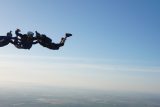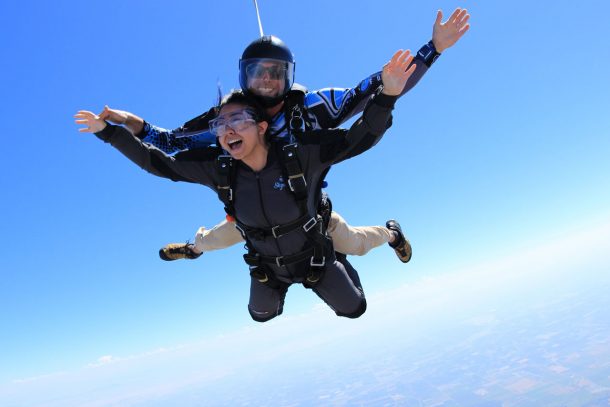5 Things You Didn’t Know About Parachutes
There’s more to a skydive than the freefall—a lesser discussed section is what happens after your 60-second descent at 120 mph. We’re talking parachute time.
Our fabric friends don’t get enough love, and we thought it was time to give you an exclusive look into the material world with some little-known information on tandem parachutes and a general look into different types of parachutes.
1. Round vs. Ram Air Parachute Types
The round parachute is pretty much the OG in the parachuting world. But, as sport skydiving developed, we realized there were a few issues with this design. After exiting an aircraft, if you were under a round parachute, you didn’t have much choice in where you landed—you were at the mercy of the wind. Not to mention, when you did land, it was a little rough.
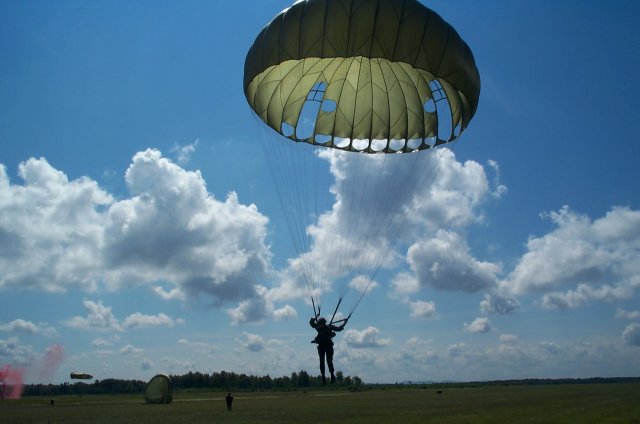
Thankfully, the round parachute is a far cry from the types of parachutes we use now.
Ram-air canopies are rectangular as opposed to round, and as the canopy moves forward and down air is forced into it creating an inflated wing. The shape and design of Ram-air canopies result in a type of parachute that is highly maneuverable and makes their users more like pilots and less like passengers.
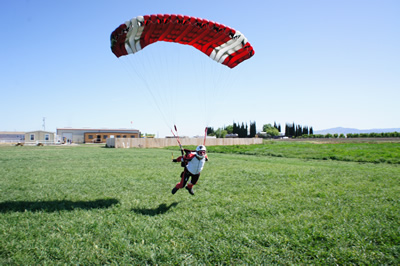
2. Specialized and Sport Parachute Types
There is no one size or one type fits all when it comes to parachutes. There are many different types of parachutes in the world of skydiving and each is built specifically to suit different experience levels, disciplines, and to provide the desired performance. The type of parachute used by a wingsuit flyer would often be very different than the parachute used by someone who flies in a head down (freeflyer) body position.
3. Size Matters
There’s a natural progression for canopy flight within skydiving. Generally, skydivers begin with big (more docile) parachutes and graduate to smaller more speedy and high-performance types of parachutes. Someone making their first jump as a tandem skydive will be using a tandem parachute designed to comfortably carry the weight of two people and allow for easy, soft landings. In the world of skydiving, the 366 square foot tandem parachute is the equivalent of an 18-wheeler truck. While the world’s elite canopy pilots, who fly 69 square foot canopies, are behind the wheel of Corvettes.
4. We Always Have a Backup Parachute
You aren’t relying on just one parachute when you skydive. All skydivers jump with an additional type of parachute designed, especially, to come in handy in emergency situations. These are called reserve parachutes. Reserve parachutes are designed for reliability over performance. But, in a sticky situation, who’s trying to look like a hot shot?
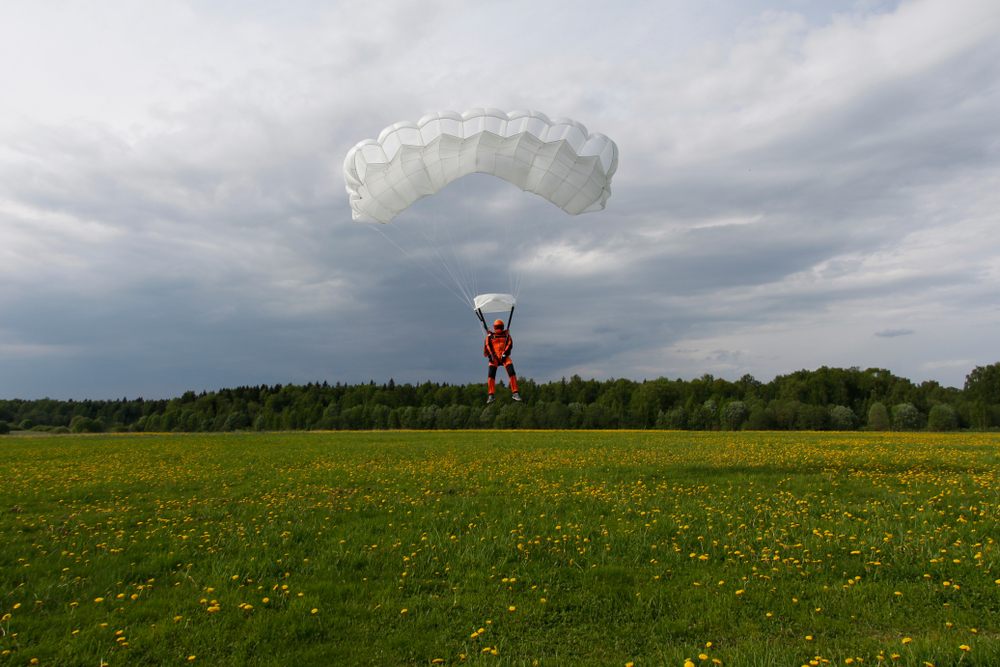
5. We Don’t Really Call Them Parachutes
If you want to stroll up to the dropzone and fit right in with the skydiver crowd, there’s something you have to know: in the biz, we don’t really refer to any types of parachutes as “parachutes.” It’s because things have changed. As you can see, the types of parachutes we use for modern sport skydiving operations are a far cry from the round docile parachutes of the old days. Now, because of their maneuverability, they are much more like fixed wings, and so, generally, we call them canopies!
Are you ready to float in the sky with a tandem instructor under a skydiving canopy? Then book your tandem skydive today at Skydive California!
